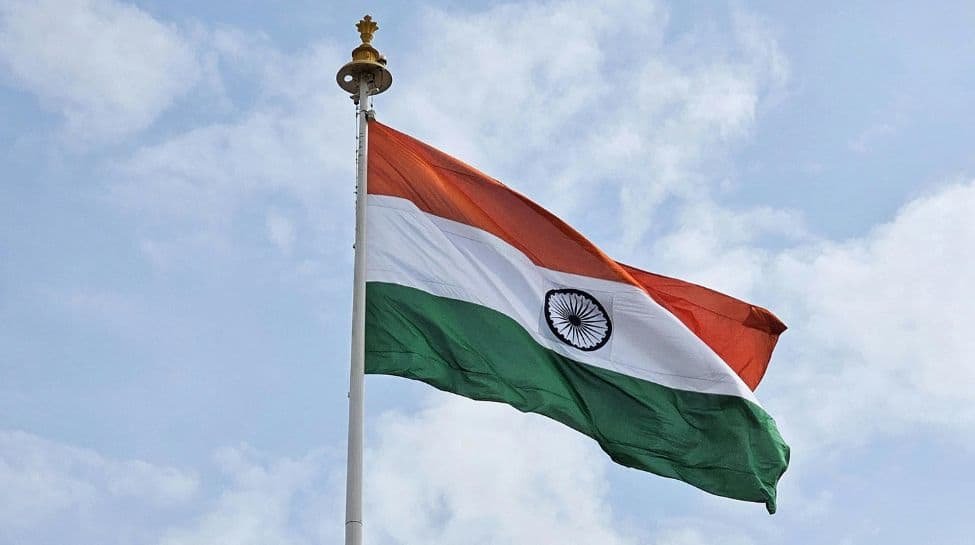On August 15, 2024, India will celebrate its 78th Independence Day, with the national flag flying proudly in the sky, symbolising the country’s hard-fought freedom and enduring unity. The Indian national flag with its saffron, white and green tricolour and the Ashoka Chakra in the middle is not just a piece of cloth but represents India’s history, struggle and values. The journey of the Indian flag is the story of a nation’s resilience, transformation and collective spirit.
Early concepts of the Indian flag
The concept of a national flag for India began to take shape in the early 20th century, when the freedom struggle gained momentum. One of the earliest versions of the Indian flag was hoisted by Madam Bhikaji Cama at the International Socialist Congress in Stuttgart, Germany in 1907. This flag, often referred to as the “Cama Flag”, had stripes of green, yellow and red with symbols representing India’s religious communities and the Vande Mataram slogan.
Birth of the tricolour
The tricolour we know today was first conceived by Pingali Venkaiah, a freedom fighter and follower of Mahatma Gandhi. In 1921, Venkaiah presented a flag design to Gandhiji, with two colours – red and green – representing India’s two major communities, Hindus and Muslims. Gandhiji suggested adding a white stripe to symbolise peace and the rest of India’s communities, as well as a spinning wheel to signify self-reliance.
The design underwent several changes over the years and by 1931 the Indian National Congress formally adopted the tricolour flag. This version had saffron at the top, white in the middle and green at the bottom, with a spinning wheel in the middle. The flag was seen as a unifying symbol representing India’s diverse communities and its aspirations for independence.
Flag of independent India
On July 22, 1947, the Constituent Assembly of India adopted the tricolour as the official national flag of India. The saffron, white and green colours were retained in the design, but the spinning wheel was replaced by the 24-spoked Ashoka Chakra, symbolising the eternal wheel of law, dharma and time. The saffron colour represents courage and sacrifice, white symbolises peace and truth, and green symbolises faith and valour. The Ashoka Chakra is derived from the Lion Capital of Ashoka, symbolising the dynamism of peaceful change.
The flag was first hoisted by Prime Minister Jawaharlal Nehru at the Red Fort in Delhi on August 15, 1947, symbolising India’s transformation from a British colony to a sovereign nation.
Development and symbolism
Over the decades, the Indian national flag has remained a powerful symbol of the country’s identity and unity. It has witnessed India’s evolution from a newly independent nation to a global power. The flag has been a part of historic moments, whether it be the Indian Army’s victories in wars or the achievements of Indian athletes on international platforms.
The design of the flag, while remaining unchanged, continues to inspire millions. The Ashoka Chakra in the middle reminds us of the values of the nation – righteousness, justice and progress. The tricolour itself represents the unity in diversity that characterises India, a country of different cultures, languages and religions.
Independence Day 2024: Celebrating the legacy of the flag
India will celebrate Independence Day in 2024 with the national flag playing a key role in the celebrations this time too. The day will begin with the flag hoisting at the Red Fort by the Prime Minister, followed by a parade that will showcase the country’s military might, cultural diversity and achievements.
The tricolour will be hoisted in schools, colleges, government buildings and homes across the country. Citizens will proudly hoist the flag, reflecting on its history and the sacrifices made by countless freedom fighters to keep it alive. The flag will serve as a reminder of the country’s ongoing journey towards development, equality and justice.
The Indian national flag is much more than a symbol; it is a testament to the country’s resilience, unity, and unbreakable spirit. As we celebrate Independence Day 2024, it is important to remember the rich history and evolution of the flag, which continues to inspire and guide the nation.
